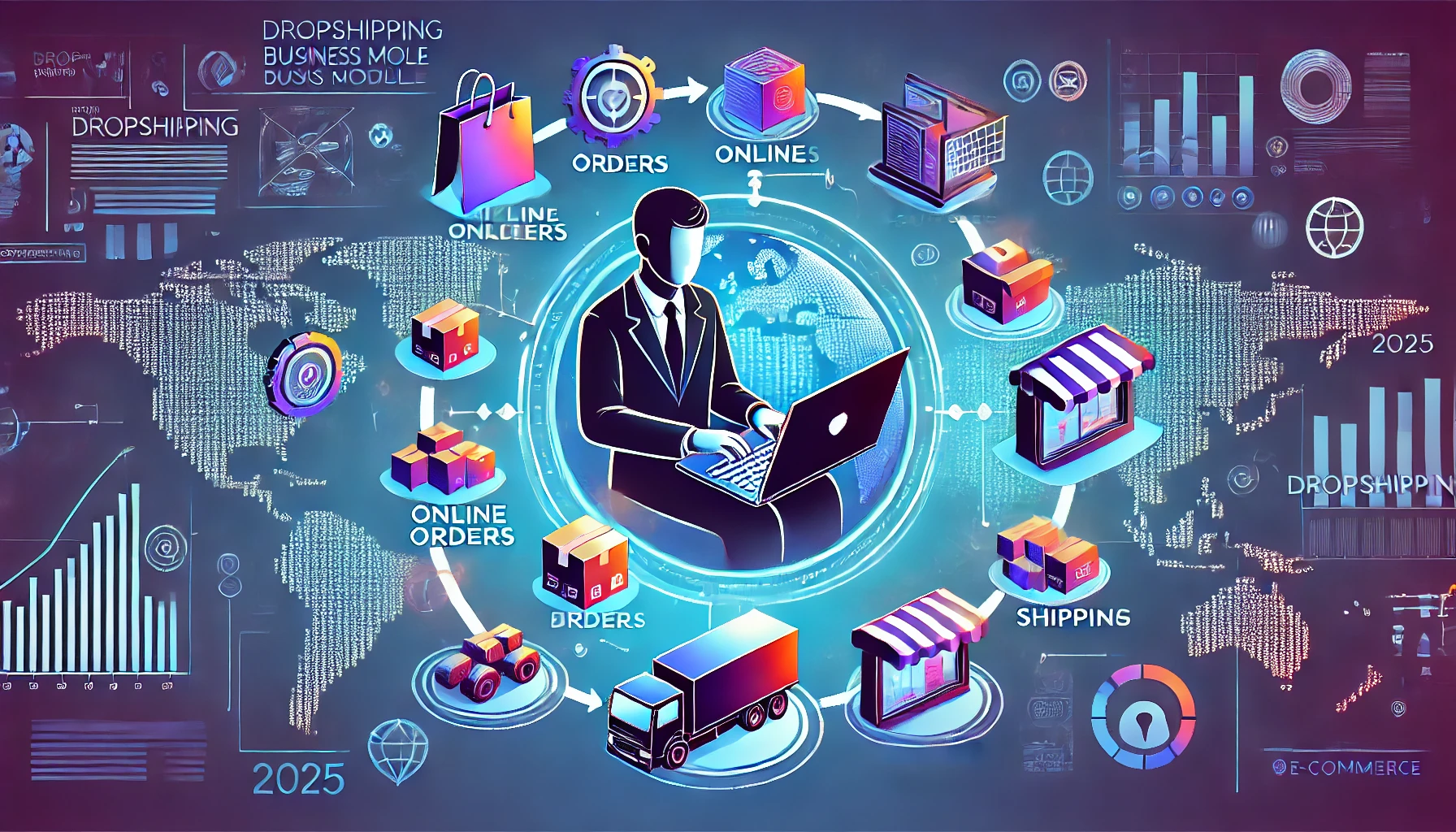Dropshipping has emerged as a popular e-commerce model over the past decade, offering entrepreneurs a low-risk way to start a business. As we move into 2025, dropshipping remains a viable option, but evolving trends and tools have reshaped the landscape. Whether you’re new to the concept or looking to refine your strategy, this detailed breakdown covers everything you need to know to get started.
What Is Dropshipping?
Dropshipping is an e-commerce fulfillment method where you, as the retailer, don’t keep products in stock. Instead, when a customer places an order on your online store, you purchase the item from a third-party supplier who ships it directly to the customer. This eliminates the need for inventory management and reduces upfront costs.
How Does Dropshipping Work?
- Set Up an Online Store: Create a website using platforms like Shopify, WooCommerce, or Wix, and populate it with products you plan to sell.
- Find Suppliers: Partner with suppliers who handle inventory and shipping, such as AliExpress, Spocket, or Oberlo.
- List Products: Add product descriptions, images, and pricing to your store.
- Market Your Store: Use strategies like social media ads, email marketing, and SEO to drive traffic.
- Fulfill Orders: When a customer places an order, forward it to the supplier, who takes care of shipping.
- Earn Profits: The difference between your selling price and the supplier’s cost is your profit.
Benefits of Dropshipping
- Low Startup Costs: No need to invest in inventory upfront, making it accessible for beginners.
- Flexible Location: Run your business from anywhere with an internet connection.
- Wide Product Selection: Sell a variety of products without worrying about storage.
- Scalability: Easily add new products or expand to new markets as your business grows.
Challenges of Dropshipping
- Thin Profit Margins: Competitive pricing can lead to low margins, especially in oversaturated niches.
- Lack of Control: Quality, shipping times, and inventory levels depend on your suppliers.
- Customer Service Issues: You’re responsible for resolving issues even if they’re caused by the supplier.
- High Competition: Dropshipping has a low barrier to entry, leading to crowded markets.
Key Trends in Dropshipping for 2025
- Sustainability: Consumers are increasingly prioritizing eco-friendly products. Partnering with sustainable suppliers or focusing on green products can help you stand out.
- Niche Specialization: Broad product ranges are less effective than focusing on specific niches, such as pet accessories or fitness gadgets.
- AI and Automation: Tools powered by AI are streamlining tasks like product sourcing, customer support, and ad targeting.
- Localized Fulfillment: To reduce shipping times, many businesses are working with suppliers that offer warehouses in multiple regions.
- Subscription-Based Models: Offering subscription options, like monthly product boxes, can ensure steady revenue.
Steps to Start Dropshipping in 2025
- Choose a Niche
- Research trending products using tools like Google Trends, SEMrush, or niche discovery platforms.
- Focus on a specific audience and their needs, ensuring a balance between demand and competition.
- Find Reliable Suppliers
- Vet suppliers carefully by reviewing their product quality, shipping times, and customer reviews.
- Use dropshipping directories like SaleHoo or Doba for verified suppliers.
- Build Your Online Store
- Use a user-friendly platform such as Shopify or WooCommerce.
- Optimize your store for mobile users, as most online shopping now happens on mobile devices.
- Develop a Marketing Strategy
- Utilize social media ads on platforms like Instagram, TikTok, and Facebook to target specific demographics.
- Create engaging content, such as videos and blogs, to build trust with your audience.
- Use email campaigns to nurture leads and encourage repeat customers.
- Streamline Operations
- Integrate tools like Oberlo or Spocket to automate order fulfillment.
- Use analytics tools to monitor performance and refine your strategies.
- Focus on Customer Experience
- Offer excellent customer support with live chat or automated responses.
- Provide clear shipping policies and keep customers informed about delays.
Top Tools for Dropshipping in 2025
- Shopify: Best platform for building a dropshipping store.
- Spocket: Connects you with high-quality suppliers, including those offering fast shipping to local regions.
- Canva: Create eye-catching graphics and product promotions.
- Zendesk: Manage customer service efficiently.
- Facebook Ads Manager: For creating targeted marketing campaigns.
Is Dropshipping Still Worth It in 2025?
Dropshipping is not a get-rich-quick scheme, but with the right approach, it can be a lucrative business model. Success requires careful niche selection, reliable suppliers, and strategic marketing. As technology continues to evolve, staying updated on trends and tools will be crucial to staying competitive.
Final Thoughts
Dropshipping in 2025 offers incredible opportunities for entrepreneurs willing to put in the effort to stand out in a crowded market. By focusing on niche products, leveraging modern tools, and prioritizing customer satisfaction, you can build a thriving business with minimal upfront investment. Whether you’re a beginner or a seasoned e-commerce enthusiast, now is the time to capitalize on the potential of dropshipping 🌍💼.

